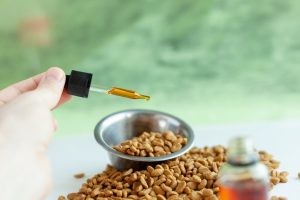Table of Contents
- Introduction
- Why Breed Freshwater Shrimp?
- Choosing the Right Species to Breed
- Preparing the Breeding Tank
- Understanding the Shrimp Breeding Cycle
- Water Conditions and Temperature for Breeding
- Feeding for Reproduction and Growth
- Caring for Shrimplets
- Troubleshooting Common Breeding Issues
- Final Tips and Summary
- Introduction
Breeding freshwater shrimp is one of the most rewarding aspects of the aquarium hobby. Whether you’re in it for fun or to build a self-sustaining colony, this guide will walk you through everything you need to know to successfully breed shrimp at home in the UK.
- Why Breed Freshwater Shrimp?
- Save money by growing your own colony
- Enjoy the natural behaviour of shrimp parenting
- Supply local shrimp to other hobbyists
- Contribute to more sustainable aquarium keeping
Shrimp breeding is low-maintenance once established and can be highly educational for both adults and children.
- Choosing the Right Species to Breed
Some shrimp are easier to breed than others. For beginners in the UK:
| Species | Ease of Breeding | Notes |
| Cherry Shrimp | Very Easy | Ideal starter species |
| Blue Velvet Shrimp | Easy | Same care as cherry shrimp |
| Amano Shrimp | Difficult | Requires brackish water for larvae |
| Crystal Red Shrimp | Moderate | Needs stable, soft water |
Start with Neocaridina species like cherry or blue shrimp for best results.
- Preparing the Breeding Tank
A simple, shrimp-only tank works best:
- Size: 20 litres minimum
- Filter: Sponge filter (gentle and shrimplet-safe)
- Substrate: Shrimp soil or fine sand
- Plants: Java moss, Subwassertang, and other fine-leaf plants
- Lighting: Moderate
Keep predators like fish out of the breeding tank for maximum survival rate.
- Understanding the Shrimp Breeding Cycle
The cycle is straightforward:
- Female molts and releases pheromones
- Males chase her for mating
- Fertilized eggs appear under the female’s tail (called “berried”)
- Eggs hatch in 2–3 weeks (for Neocaridina)
- Baby shrimp (shrimplets) emerge as miniature adults
Note: Caridina species (e.g. Amano) require different care.
- Water Conditions and Temperature for Breeding
Stable water conditions are critical:
- Temperature: 22–24°C
- pH: 6.5–7.5
- GH: 4–8
- KH: 1–4
- Nitrate: < 20 ppm
Use a test kit to monitor conditions. Avoid sudden changes.
- Feeding for Reproduction and Growth
Feed a balanced, high-quality diet:
- Shrimp-specific pellets and wafers
- Blanched vegetables (spinach, courgette)
- Protein once or twice a week (e.g. bloodworms, daphnia)
- Biofilm is essential — encourage its growth on driftwood and plants
Feed small portions to avoid fouling the water.
- Caring for Shrimplets
After hatching:
- Avoid strong currents
- Leave biofilm and mulm in the tank
- Use powdered baby shrimp food or crushed flakes
- Minimise disturbance and avoid water changes for the first week
Keep lighting soft and avoid sudden shocks.
- Troubleshooting Common Breeding Issues
| Problem | Cause | Solution |
| Shrimp not breeding | Stress, no males, poor diet | Improve diet and conditions |
| Eggs not hatching | Fungus, stress, bad parameters | Stabilise water, separate berried females |
| Shrimplet deaths | Water changes, poor filtration | Gentle flow, stable tank |
- Final Tips and Summary
- Start with hardy species like Cherry or Blue Velvet
- Focus on stable water and natural food sources
- Avoid aggressive tank mates and over-cleaning
- Keep a detailed breeding log for tracking progress
Breeding freshwater shrimp at home in the UK is fun, educational, and helps you build a thriving colony. With the right setup and a bit of patience, you’ll be enjoying a tank full of happy, healthy shrimp in no time.





